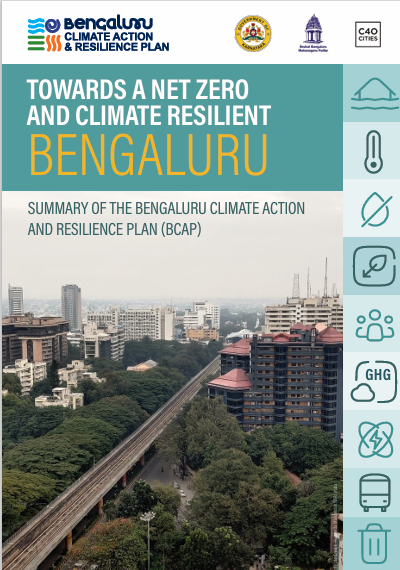Renewable Energy and Carbon Credits in India
Introduction
India, one of the world’s fastest-growing economies, faces the dual challenge of meeting its burgeoning energy demands while reducing greenhouse gas emissions to combat climate change. Renewable energy has emerged as a vital component of India’s strategy to address these challenges. Coupled with the generation of carbon credits, renewable energy projects in India offer not only environmental benefits but also economic opportunities through participation in global carbon markets. This essay explores the relationship between renewable energy and carbon credits in India, highlighting the significance of these projects, the mechanisms involved, the impact on the country’s energy landscape, and the challenges and future prospects.
The Significance of Renewable Energy in India
India has made significant strides in renewable energy development over the past decade, driven by a combination of policy support, technological advancements, and increasing awareness of the need for sustainable energy solutions. Renewable energy sources, including solar, wind, hydro, and biomass, have become central to India’s energy strategy. As of 2024, India has one of the world’s largest renewable energy programs, with ambitious targets set under the National Action Plan on Climate Change (NAPCC) and the National Solar Mission.
The significance of renewable energy in India extends beyond energy security. It plays a crucial role in reducing the country’s reliance on fossil fuels, particularly coal, which is a major source of carbon dioxide (CO2) emissions. By transitioning to cleaner energy sources, India aims to decrease its carbon footprint and contribute to global efforts to mitigate climate change.
Carbon Credits: An Overview
Carbon credits are tradable certificates or permits that represent the right to emit one metric ton of CO2 or an equivalent amount of other greenhouse gases (GHGs). They are a key component of carbon markets, which are designed to provide financial incentives for reducing emissions. Carbon credits can be earned through projects that reduce, avoid, or sequester GHG emissions, such as renewable energy projects, reforestation, and energy efficiency improvements.
In India, carbon credits can be generated through various mechanisms, including the Clean Development Mechanism (CDM) under the Kyoto Protocol, and voluntary carbon standards such as the Verified Carbon Standard (VCS) and the Gold Standard. These credits can be sold to companies, governments, or individuals looking to offset their emissions, providing a revenue stream for project developers and contributing to the financial viability of renewable energy projects.
Renewable Energy Projects and Carbon Credits in India
Renewable energy projects are among the most prominent sources of carbon credits in India. The country’s abundant solar and wind resources, in particular, have made it a global leader in renewable energy carbon credit generation. The following are some key renewable energy sectors that contribute to carbon credit generation in India:
- Solar Energy:
India’s solar energy sector has grown rapidly, driven by the National Solar Mission and state-level policies that promote solar power generation. Solar projects, including utility-scale solar farms and rooftop installations, have significantly contributed to carbon credit generation. By displacing electricity generated from coal-fired power plants, these projects help reduce CO2 emissions, thereby earning carbon credits. - Wind Energy:
Wind power is another major contributor to India’s renewable energy capacity. India’s wind energy projects, particularly in states like Tamil Nadu, Gujarat, and Maharashtra, have been instrumental in generating carbon credits. These projects involve the installation of wind turbines that generate electricity without emitting GHGs. The carbon credits generated from wind projects can be traded in both compliance and voluntary carbon markets. - Biomass Energy:
Biomass energy projects in India utilize agricultural residues, animal waste, and other organic materials to produce electricity or biofuels. These projects not only reduce reliance on fossil fuels but also mitigate methane emissions from organic waste decomposition. Biomass projects are eligible for carbon credits, especially when they contribute to reducing methane emissions, a potent GHG. - Hydropower:
Small-scale hydropower projects, particularly in India’s hilly regions, also contribute to carbon credit generation. These projects harness the energy of flowing water to generate electricity without emitting GHGs. Hydropower projects are recognized under various carbon standards and can earn credits that are sold to offset emissions elsewhere.
Mechanisms for Generating and Trading Carbon Credits
In India, renewable energy projects generate carbon credits through several established mechanisms. The most prominent among these is the Clean Development Mechanism (CDM), which was established under the Kyoto Protocol. India has been one of the largest beneficiaries of the CDM, with a significant number of projects registered under this mechanism.
Under the CDM, project developers must demonstrate that their projects lead to measurable and verifiable reductions in GHG emissions. Once verified, the project is awarded Certified Emission Reductions (CERs), which can be sold in international carbon markets. Despite the challenges posed by the fluctuating prices of CERs, the CDM has been a key driver of renewable energy development in India.
In addition to the CDM, India has seen the growth of the voluntary carbon market, where projects can be registered under standards such as the Verified Carbon Standard (VCS) or the Gold Standard. These voluntary markets allow companies and individuals to purchase carbon credits to offset their emissions, often motivated by corporate social responsibility (CSR) or sustainability goals. Renewable energy projects in India have successfully tapped into these markets, offering carbon credits that meet the rigorous criteria of these standards.
Impact on India’s Energy Landscape
The integration of renewable energy and carbon credits has had a profound impact on India’s energy landscape. Some of the key impacts include:
- Accelerated Renewable Energy Deployment:
The financial incentives provided by carbon credits have accelerated the deployment of renewable energy projects across India. By making projects more financially viable, carbon credits have attracted investment from both domestic and international sources. - Diversification of the Energy Mix:
Renewable energy has helped diversify India’s energy mix, reducing its dependence on coal and other fossil fuels. This diversification is crucial for enhancing energy security and reducing the environmental impact of energy production. - Economic Benefits:
The renewable energy sector has generated significant economic benefits, including job creation, investment opportunities, and revenue generation through carbon credit sales. These benefits have had positive spillover effects on local economies, particularly in rural areas. - Contribution to Climate Goals:
By promoting the adoption of renewable energy and the generation of carbon credits, India is making substantial progress towards its climate goals. The reduction in GHG emissions from renewable energy projects contributes directly to India’s commitments under the Paris Agreement and its Nationally Determined Contributions (NDCs).
Challenges and Future Prospects
Despite the successes, the integration of renewable energy and carbon credits in India faces several challenges:
- Price Volatility:
The price of carbon credits in both compliance and voluntary markets has been volatile, creating uncertainty for project developers. This volatility can affect the financial viability of renewable energy projects. - Regulatory Hurdles:
Navigating the complex regulatory environment for renewable energy and carbon credits in India can be challenging. Streamlining regulatory processes and providing clearer guidelines could facilitate project development. - Market Demand:
The demand for carbon credits, particularly in the voluntary market, can fluctuate based on global economic conditions and corporate priorities. Sustaining demand is crucial for the continued success of renewable energy projects. - Technological Challenges:
While India has made significant progress in renewable energy, challenges related to grid integration, energy storage, and technological innovation remain. Addressing these challenges will be key to scaling up renewable energy deployment.
Looking ahead, the future prospects for renewable energy and carbon credits in India are promising. The government’s continued commitment to renewable energy, coupled with international support for climate action, provides a strong foundation for growth. The development of new carbon pricing mechanisms, advancements in technology, and increased corporate engagement in sustainability initiatives are likely to drive further expansion of this sector.
Conclusion
Renewable energy and carbon credits have become intertwined components of India’s strategy to address its energy and environmental challenges. By promoting the generation of clean energy and the reduction of greenhouse gas emissions, India is not only enhancing its energy security but also contributing to global climate goals. While challenges remain, the opportunities for growth in this sector are significant. With continued support from policymakers, investors, and the private sector, renewable energy and carbon credits will play a crucial role in shaping a sustainable future for India.




Leave a Reply